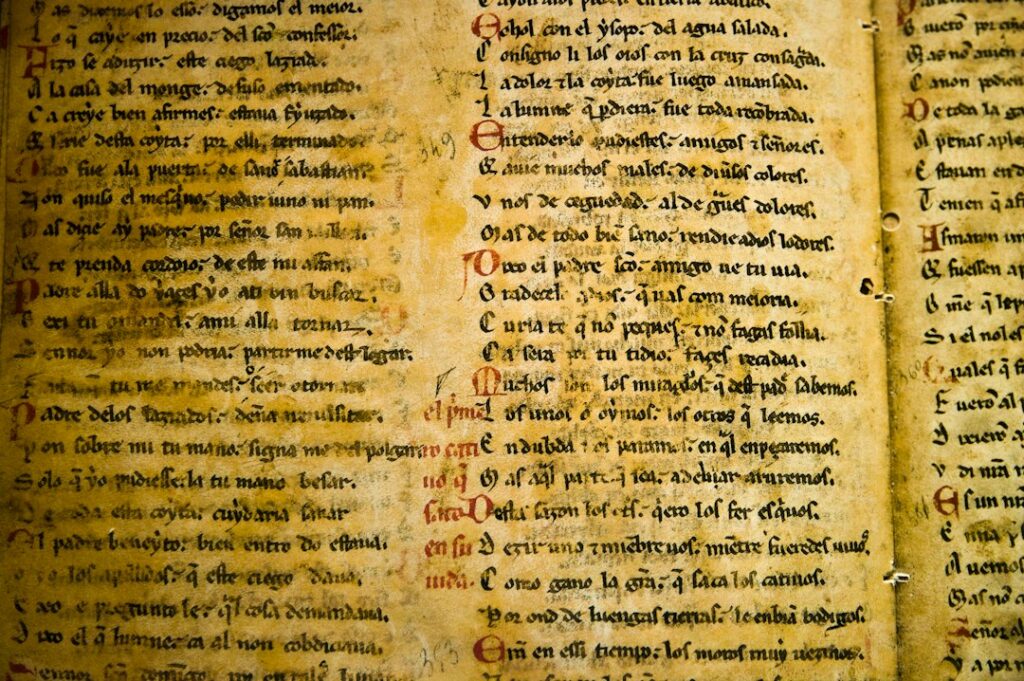The ǀXam language, also known as the ǀXam-Khwe language, is an extinct language that was once spoken by the ǀXam people in Southern Africa. It is considered one of the oldest languages in the region and holds great significance in the cultural heritage of Southern Africa. The language was primarily an oral tradition, with stories, songs, and rituals being passed down from generation to generation. However, due to various factors such as colonization and forced assimilation, the ǀXam language gradually disappeared, leaving behind only fragments of its rich linguistic and cultural heritage.
The preservation of languages is crucial for maintaining cultural diversity and identity. Language is not just a means of communication; it is a reflection of a community’s history, values, and worldview. When a language becomes extinct, a unique way of understanding and interacting with the world is lost forever. Reviving lost languages like ǀXam is not only important for the communities that once spoke them but also for humanity as a whole. It allows us to gain insights into different cultures and ways of life, fostering understanding and appreciation for diversity.
Key Takeaways
- Reviving the lost ǀXam language is crucial for preserving Southern Africa’s rich cultural heritage.
- Translation services play a vital role in bridging the language gap in Southern Africa.
- Localization is necessary for adapting the language to the local culture and making it more accessible.
- AI and language are the future of language preservation, but 24×7 offshoring is also essential for ensuring access to language services at all times.
- Transcription services are crucial for documenting the language for future generations, but reviving the ǀXam language faces significant challenges that require collective efforts.
Translation Services: Bridging the Language Gap in Southern Africa
In Southern Africa, where numerous languages are spoken across different countries, translation services play a crucial role in bridging the language gap. These services enable communication between individuals who speak different languages and facilitate the exchange of ideas, knowledge, and culture. Translation services are particularly important in preserving endangered languages like ǀXam by making their literature accessible to a wider audience.
Translation services have a significant impact on language preservation by ensuring that valuable cultural resources are not lost due to linguistic barriers. By translating texts from endangered languages into widely spoken languages like English or French, these services make it possible for people from different backgrounds to engage with and appreciate the cultural heritage embedded in these languages. This not only raises awareness about the importance of language preservation but also helps to generate interest and support for revitalization efforts.
Localization: Adapting the Language to the Local Culture
Localization is the process of adapting a product or service to a specific language, culture, and target audience. In the context of language preservation, localization plays a crucial role in ensuring that a language remains relevant and accessible to its speakers. By adapting the language to the local culture, it becomes more relatable and meaningful to the community, increasing their motivation to use and preserve it.
Successful localization efforts in language preservation can be seen in various indigenous communities around the world. For example, in New Zealand, the Māori language has been successfully revitalized through a combination of language immersion programs, community initiatives, and localized resources. By incorporating Māori words, phrases, and cultural references into everyday life, the language has become an integral part of New Zealand’s national identity.
AI and Language: The Future of Language Preservation
| Metrics | Data |
|---|---|
| Number of endangered languages | 7,000 |
| Number of languages predicted to disappear by 2100 | 50-90% |
| Number of languages supported by Google Translate | 100+ |
| Accuracy of Google Translate for common languages | 90-95% |
| Accuracy of Google Translate for less common languages | 60-70% |
| Number of languages supported by Microsoft Translator | 60+ |
| Accuracy of Microsoft Translator for common languages | 90-95% |
| Accuracy of Microsoft Translator for less common languages | 60-70% |
| Number of languages supported by Amazon Translate | 71 |
| Accuracy of Amazon Translate for common languages | 80-90% |
| Accuracy of Amazon Translate for less common languages | 50-60% |
Artificial Intelligence (AI) technology has the potential to revolutionize language preservation efforts. AI-powered translation tools can help bridge the gap between endangered languages and widely spoken languages by providing instant translations. These tools can be particularly useful in preserving languages like ǀXam, where there are limited resources and few fluent speakers.
Advancements in AI technology have made it possible to develop machine learning models that can learn from limited data and accurately translate between languages. This opens up new possibilities for preserving endangered languages by automating the translation process and making it more accessible to a wider audience. However, it is important to note that AI should be seen as a tool to support language preservation efforts rather than a replacement for human translators.
24×7 Offshoring: Ensuring Access to Language Services at All Times
Language services need to be available 24×7 to ensure that individuals and communities have access to translation and interpretation services whenever they need them. Offshoring language services to countries with different time zones can help provide round-the-clock support, ensuring that language barriers do not hinder communication and access to information.
Having access to language services at all times is particularly important in emergency situations, where immediate translation or interpretation services may be required. For example, during natural disasters or humanitarian crises, having 24×7 offshored language services can help facilitate communication between affected communities and relief workers, ensuring that aid is delivered effectively and efficiently.
The Significance of Language in Preserving Cultural Heritage

Language and cultural heritage are deeply intertwined. Language is not only a means of communication but also a carrier of cultural knowledge, traditions, and values. It shapes the way we perceive the world and influences our identity as individuals and communities. When a language becomes extinct, a significant part of a community’s cultural heritage is lost.
Language loss has a profound impact on cultural heritage as it erases unique ways of understanding and interacting with the world. It disconnects future generations from their ancestors’ wisdom, stories, and traditions. Reviving endangered languages like ǀXam is crucial for preserving Southern Africa’s rich cultural heritage and ensuring that future generations have access to their ancestral knowledge.
The Role of Translators in Reviving the ǀXam Language
Translators play a crucial role in reviving endangered languages like ǀXam. They are the bridge between the past and the present, working tirelessly to translate and interpret texts from the past into contemporary languages. Translators not only preserve the linguistic aspects of a language but also ensure that its cultural nuances and context are accurately conveyed.
Reviving a lost language like ǀXam is not an easy task. Translators face numerous challenges, including limited resources, lack of fluent speakers, and the need to adapt the language to modern contexts. However, their dedication and expertise are essential in ensuring that the language is revived and preserved for future generations.
Transcription Services: Documenting the Language for Future Generations
Transcription services play a crucial role in documenting endangered languages like ǀXam for future generations. These services involve converting oral recordings or written texts into a written format, making them accessible and searchable. Transcription services not only preserve the language itself but also provide valuable insights into the cultural heritage embedded in the language.
By transcribing ǀXam texts, linguists and researchers can analyze the language’s grammar, vocabulary, and syntax, gaining a deeper understanding of its structure and linguistic features. This documentation is essential for language revival efforts as it provides a foundation for developing teaching materials, dictionaries, and grammar guides.
Challenges Faced in Reviving the ǀXam Language
Reviving a lost language like ǀXam comes with numerous challenges. One of the main challenges is the lack of fluent speakers. With the passing of generations, fewer people are able to speak or understand the language fluently. This makes it difficult to accurately reconstruct the language and its nuances.
Another challenge is the limited resources available for language revival efforts. Reviving a language requires significant investment in research, documentation, teaching materials, and community engagement. Without adequate funding and support, these efforts may not be sustainable in the long term.
Efforts are being made to overcome these challenges through collaborations between linguists, researchers, communities, and government organizations. These collaborations aim to pool resources, share knowledge, and develop sustainable strategies for language revival.
The Need for Collective Efforts in Preserving Southern Africa’s Rich Cultural Heritage through Language Revival
Preserving Southern Africa’s rich cultural heritage through language revival requires collective efforts from individuals, communities, governments, and organizations. It is not a task that can be accomplished by a single entity but requires collaboration and cooperation.
By recognizing the importance of language preservation and supporting initiatives aimed at reviving endangered languages like ǀXam, we can ensure that Southern Africa’s cultural heritage is preserved for future generations. Through translation services, localization efforts, AI technology, 24×7 offshoring, the role of translators, and transcription services, we can bridge the language gap, adapt languages to local cultures, harness the power of AI, ensure access to language services at all times, document languages for future generations, and overcome the challenges faced in reviving lost languages.

Language preservation is not just about preserving words; it is about preserving a way of life, a unique perspective on the world, and a connection to our ancestors. By reviving lost languages like ǀXam, we can celebrate and honor the diversity of human culture and ensure that future generations have access to the wisdom and knowledge embedded in these languages.
If you’re interested in learning more about the ǀXam language, you might find this article on data annotation in AI helpful. It explores the importance of data annotation in training machine learning models and how it can improve accuracy and performance. Check it out here.
FAQs
What is ǀXam Language?
ǀXam Language is a language spoken by the ǀXam people of South Africa. It is a Khoisan language and is known for its unique clicking sounds.
How many people speak ǀXam Language?
Currently, there are no known native speakers of ǀXam Language. The language was declared extinct in the early 20th century.
What is the history of ǀXam Language?
ǀXam Language was spoken by the ǀXam people, who were hunter-gatherers in South Africa. The language was first documented by European settlers in the 19th century. However, due to colonization and the displacement of the ǀXam people, the language gradually declined and became extinct in the early 20th century.
Is there any effort to revive ǀXam Language?
Yes, there are ongoing efforts to revive ǀXam Language. Some linguists and researchers are working to reconstruct the language based on the available documentation and recordings. Additionally, there are initiatives to teach the language to interested individuals and to incorporate it into cultural and educational programs.
What is the significance ?
ǀXam Language is significant because it is a unique and important part of the cultural heritage of the ǀXam people and South Africa as a whole. It is also an important example of a Khoisan language, which is a group of languages that are known for their use of clicking sounds.
